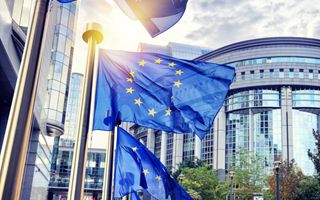(Finance) – Second Scope Ratings the expected increase in support for far-right parties in the European Parliament elections and in all Member States”will probably influence EU decision-making, but not should alter significantly enhance Europe’s strategic priorities in addressing structural challenges.”
Regardless of the outcome – write Eiko Sievert and Tom Giudice, Sovereign and Public Sector – we foresee that the EU’s strategic priorities “will focus on defending and increasing economic competitiveness, potentially to the marginal detriment of the green agenda, not least because the Greens are likely to be the party that will lose the most seats. One of the key objectives is to strengthen the Markets Union capital funds (UMC) to mobilize private savings for investment and close an estimated financing gap of €500 billion per year between the EU and the US.”
The current President of the European Commission Ursula von der Leyen “remains the favorite for a second term, although her willingness to work with MEPs far-right has weakened the support of S&D and Renew, which could lead to the emergence of alternative candidates such as Mario Draghi in Italy and Andrej in Croatia. Plenkovic, or Klaus Iohannis of Romania”.
However, “lThe rise of far-right parties in many European countries, together with Hungarian Prime Minister Victor Orbán who will take over the rotating six-month presidency of the Council of the EU from July, it will influence EU decision-making and could lead to slower progress on the green agenda. and a tougher stance on immigration.”
The work to strengthen the Capital Monetary Union will be “an important goal for the next EC. The project enjoys strong support from eurozone finance ministers. Enrico Letta’s report on the future of the single market and Mario Draghi’s long-awaited report on EU competitiveness will help shape how the EC addresses competitiveness challenges.”
Attention is paid – the experts underline – how to better mobilize private capital and improve the EU’s competitiveness by promoting job creation, ease of doing business and strengthening research, innovation and education, with the financing of the green and digital transition in mind. Draghi highlighted the financing gap between Europe and the United States of 500 billion euros per year. To narrow the field, one third of the funds should come from public sources. While around €95 billion of Next Generation EU’s maximum allocation is unused, additional funds remain to be raised through mechanisms such as the new EU common debt and public-private partnerships.
Given the geopolitical prospects, “More investment in security and defense will also be a priority. An indicator of this trend is the decision of the European Investment Bank (AAA/Stable) to facilitate the financing of SMEs in the security and defense sector. The scale and speed of Europe’s ambition to do more to finance defense, potentially through joint debt issuance, will depend partly on the outcome of the US elections in November and the strength of the next administration’s commitment to towards NATO”.
Experts also highlight the structural challenges. “If the new EC acts decisively to follow up on its strategic priorities, the EU will be well placed to help address some of Europe’s structural challenges: from the slow post-Covid economic recovery to managing challenges with a population that ages and declines and moderate productivity growth”.
